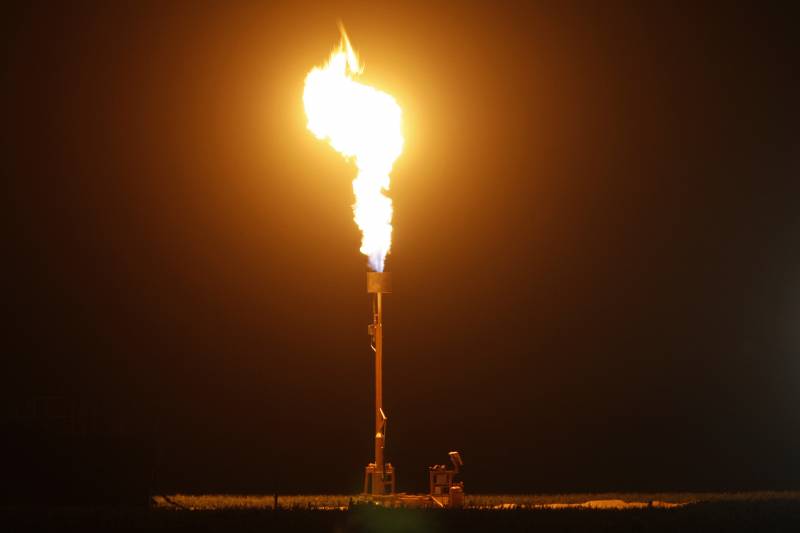Many oil and gas companies have pledged to reduce their methane emissions. But beyond the methane leaks, emissions from new petrochemical plants and liquid natural gas export facilities in coming years, spurred by the gas boom, are set to surge.
With costs of renewable energy sources like wind and solar now competitive with natural gas, many experts who have studied the industry’s emissions say that even though the switch from coal to gas has likely provided some climate benefits, marginal as they may be, it’s harder to argue that it can continue doing so in the future.
David Lyon, a scientist with the Environmental Defense Fund, which has collaborated with the oil and gas industry in working on methane, said asking whether gas is better than coal may be the wrong question. “Compared to coal, I think there are a lot of advantages to natural gas,” he said. “But renewables have a lot more advantages.””Compared to coal, I think there are a lot of advantages to natural gas,” he said. “But renewables have a lot more advantages.”
Jessika Trancik, an associate professor at the Massachusetts Institute of Technology’s Institute for Data, Systems and Society, who recently co-authored a study about the coal-to-gas switch, said continuing to rely on natural gas will grow increasingly difficult.
“It has served as a bridge,” she said. “But we’re kind of nearing the end of the bridge.”
How Far Have Emissions Fallen?
Official EPA data says methane emissions from the oil and gas industry were down slightly from 2005 to 2017 and were down significantly from 1990 levels. Over the same period, oil and gas production has grown substantially, and the industry points to this as a sign of its efforts to limit emissions.
“Given the seriousness and risks of climate change, natural gas and oil operators are working harder than ever to capture as much methane as possible during production and transmission,” said Reid Porter, a spokesman for the American Petroleum Institute, in an email.
Yet while EPA hasn’t published data for the past two years, other sources suggest methane emissions may be rising. The U.S. Energy Information Administration says the industry’s venting and flaring—venting is the intentional release of methane to the atmosphere, while flaring burns the methane to emit carbon dioxide instead—jumped by about 66 percent in 2018. That doesn’t include unintended leaks from equipment. An analysis by the Rhodium Group of more recent data found that the industry’s methane emissions were up last year.
Whatever the official numbers say, actual emissions are almost certainly far higher. Figuring out how much methane is leaking is critical for climate accounting: while methane remains in the atmosphere for a much shorter period than carbon dioxide, it traps far more heat while it’s there. Scientists say methane is responsible for about one-quarter of the warming the world has experienced so far. And the oil and gas sector appears to be a growing source of these emissions globally.

In 2018, a study by scientists with the Environmental Defense Fund and more than a dozen research institutions pulled together measurements taken around the country and estimated that the industry leaked about 2.3 percent of all the gas it produced in 2015. That’s about 60 percent more than EPA reported. Others have suggested the rate could more like 3 percent. Lyon, one of the study’s authors, said the scale of the leaks suggests the benefits of gas are much less than they appear.
“Probably the average national loss rate is low enough that there are immediate climate benefits of replacing coal with gas,” he said. “But it’s going to be close.”
One of the biggest uncertainties comes from so-called “super-emitters”—a term that refers to uncommon events that release massive volumes of methane. Last year, Dutch scientists published research drawing on satellite data suggesting that one 2018 accident at an Ohio gas well leaked more methane than the entire oil and gas industry of Norway does in a year. ExxonMobil, which operated the well through a subsidiary, said internal data had shown the volume of leaked gas was smaller.
The American Petroleum Institute has also supported steps by the Trump administration to weaken regulations enacted by the Obama administration to improve reporting and reduce leaks. Porter said other state and federal regulations already control methane emissions.
Beyond the U.S., new evidence suggests natural gas use is growing so fast globally that the rise in carbon dioxide emissions from gas has eclipsed the decline in emissions from coal. And that’s not even counting methane leaks.
Looking Ahead
Even if gas has provided a benefit so far, there’s growing evidence it’s becoming an increasingly bad bet for the future.
Precisely how bad depends in part on how methane is compared with carbon dioxide, the primary greenhouse gas. Since methane traps more heat but breaks down much more quickly, scientists use a sliding scale to convert methane emissions into “carbon dioxide equivalents.” If you compare the two gases over the course of a century, methane is roughly 30 times more potent than carbon dioxide. If you look over a 20-year timeframe, methane is more than 80 times stronger. The EPA uses the 100-year conversion.
“What that does is it greatly discounts what methane can do for the decade or three that it’s in the atmosphere,” said Robert Howarth, a professor of ecology at Cornell University, speaking about the EPA’s approach. “I and others have been arguing we should use a shorter time frame, because we’re concerned about reaching tipping points in the climate system over the next one to two to three decades, and methane can drive us over those tipping points.”
In December, Trancik and Magdalena Klemun, a postdoctoral researcher at MIT, published a study about whether gas can continue to help drive down greenhouse gas emissions by replacing coal in the electricity mix, given the methane leaks from the supply chain. They found that if you focus on methane’s short-term warming impact, the industry would need to eliminate up to 90 percent of its methane emissions in order to help meet a goal of cutting total greenhouse gas emissions from the power sector by 32 percent below 2005 levels by 2030.
But methane leaks are just part of the story. While a natural gas-fired power plant emits only about half the carbon dioxide as a coal plant, that’s still far from zero. And record-high gas production has sent prices plummeting, driving a boom in industrial activity to use all that cheap gas.
A pair of recent studies used data from permits for planned and recently completed projects such as chemical plants and liquid natural gas export facilities to estimate what this boom in industrial development could mean for emissions. One, by the Environmental Integrity Project, an advocacy group, found that by 2025, the planned development could contribute a level of emissions equal to that of 50 coal plants. Another, published this month by researchers at the University of Texas at Austin, projected out to 2030 but limited its scope to development in Texas and Louisiana. It found even higher figures. If every proposed project were to move forward, they determined, the industry’s expansion in the region could lead to an additional 541 million tons of carbon dioxide equivalent per year by 2030, equal to about 8 percent of total U.S. greenhouse gas emissions today.
And methane leaks were only a piece of that. The expansion of petrochemical plants, like those that produce plastics from gas, account for nearly 40 percent of the additional emissions. New liquified natural gas terminals, which allow companies to export gas overseas, make up nearly 20 percent of the emissions. The study was funded by the Cynthia and George Mitchell Foundation, which was founded by a former energy executive who pioneered using hydraulic fracturing to produce gas from shale.
The idea of natural gas as a bridge fuel to a more renewable future “is a thing that is said,” said Andrew Waxman, the paper’s lead author. “My main response is that the jury is still out.”
Another Way
You only build a bridge as long as it needs to be. And increasingly, many advocates and energy experts are saying that in the transition to low-carbon energy, we’ve already reached the other side.
Wind and solar power are now often cheaper than gas. The costs of large batteries are coming down rapidly, too, which could allow wind and solar power to provide a higher proportion of the grid’s electricity, even though they produce energy intermittently. Already, construction of new renewables is outpacing gas in terms of capacity.
If the aim is to get to zero net emissions by midcentury, Trancik said, “then you have to transition away from natural gas.” At this point, she said, any new natural gas power plant or pipeline, which may be expected to continue operating for decades, creates a new financial incentive to continue to use more gas, making it that much harder to phase out fossil fuels.
“I think we should be very hesitant of investing in new infrastructure with a long life,” she said.


